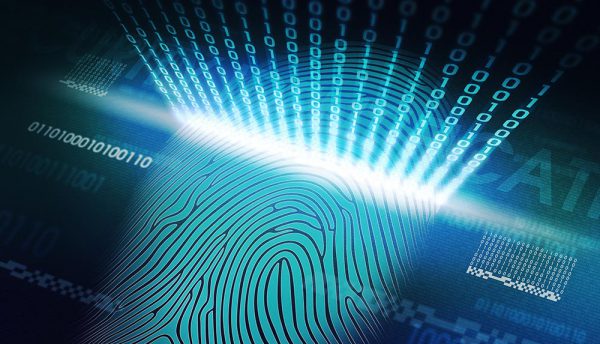Capturing and storing biometrics as proof of identification is becoming increasingly commonplace, especially in the digital age we live in today. Pine Pienaar, Managing Director at Afiswitch, analyses why many organisations are adopting this type of technology.
Have you ever done a Google search on yourself? Most people have and if your friends and family are active online and on social media platforms, someone at some stage has probably recommended to you that you do such a search and check.
It is actually a good practice, as it gives you some insight into what information about you may be publicly available. Whether its photos from your latest holiday, the restaurant you checked into with family and friends over the weekend, your place of employment or professional networking sites. Fortunately, you can still decide if you are comfortable that any such information about you is available for anyone connected to the Internet to view – and if not, change the privacy settings on all your social media profiles.
But who else has access to background information about you, and why?
Two potential prime custodians of information about you are your employer and any creditor you may have a loan or account with. For example, when you apply for a new job or a large loan, the hiring organisation or financial institution respectively will often require you to complete an application form with a series of personal questions, for their respective background screening purposes.
While some of the information each will require will differ, generally it will certainly include information such as your full name details, your identification number and where you live – and often you will be asked to provide proof of these details, such as a copy of your identification document and possibly proof of residence.
By providing such information you are given the hiring organisation or financial institution permission to view and ‘hold onto’ such information about you. Additionally, and given the growing phenomenon of fake documents and identity fraud, many hiring organisations and financial institutions are taking this a step further, as capturing and storing biometrics as proof of identification is becoming increasingly commonplace, especially in the digital age we live in today.
For this, the hiring organisation or financial intuition will ask you to share some form of biometric – a digital scan of your fingerprint is most commonly used – and will then request your permission to use your biometric to conduct a background check on you. The purpose of the background check is foremost to confirm your identity, but it may also include if you have a previous conviction, qualification verifications and your employment and/or credit history. In most instances this process is merely a formality where using a biometric produces results with higher accuracy than relying solely on an identification number or document. And, if you’ve been completely honest on all the information about yourself that you shared in the application process – what do you have to hide?
Well, what if you don’t know that, for example, you have a previous conviction or pending case awaiting trial against you? Or perhaps you are not aware of the fact that your name and/or identification number has previously been listed as a bad creditor?
In our experience, and particularly with previous or pending convictions, many people are unaware that they have a conviction or case awaiting trial against them. This could be for any number of reasons, for example; unpaid fines for traffic offences that have been escalated, to something a person may have done when they were younger for which at the time they signed an ‘admission of guilt’ and paid a fine, not realising this would reflect on their record.
In either instance mentioned here the person may be unaware because they have not yet, or at all, received written feedback or documentation pertaining to the confirmed or pending conviction. Similarly, a person’s details may have been entered onto a ‘bad creditor’ database, or their accounts handed over for legal collection of which they may not be aware due to a gap in communications, for example.
To remedy this, we recommend that individuals conduct various self-checks on themselves on a regular basis – to ensure that the information available about them is correct and up-to-date at all times. This ensures that the hiring organisation or financial institution which an individual may be applying to, for example, can rest assured that they know who they are dealing with – and in turn the individual knows themselves and what information they are sharing in a technological driven information sharing society.

Global biometric trends
Globally, Digital Transformation and consumer acceptance of biometrics as a measure to increase security protocols are both having a significant impact on driving the rapid adoption of biometrics. However, it must be recognised that the opportunities are far greater than just for security.
In fact, as widespread adoption of digital technologies such as cloud computing, Machine Learning (ML) and Internet of Things (IoT) continues to grow in mainstream markets, we are seeing faster innovation in the biometrics space too. And, while uses and uptake for mobile and multimodal identity management solutions will still grow significantly in the coming years, parallel to this, we are also seeing exciting developments in solutions that meet new uses or applications – offering consumers increased convenience and enhanced experiences across more mainstream markets.
As we closely follow developments across global markets, I’ve identified three uses or applications where I believe biometric-based solutions will increasingly be deployed:
Biometrics to introduce paperless airport transfers
There have been a number of developments and pilot programmes rolled out in airports across the world; aimed at capturing, storing and making use of an individual’s biometrics as a form of authenticating a traveller’s identity. The move to biometrics can be underpinned by two key drivers; increased security at/through airports and improving the customer/traveller experience.
From a security point-of-view, it is well recognised that there is a global phenomenon with fake documents, including passports, and linked to identity theft. However, the introduction of multimodal biometric solutions – which generally involve an Automated Biometric Identification System (ABIS) as the basis and offers far more accurate identity verifications. And when these systems are securely integrated with appropriate databases, they are also able to deliver reliable results instantly.
Biometrics-based security protocols also create opportunities to streamline and speed up check-ins, customs and border control, and transfers at airports. This can reduce customer and traveller stress points and frustrations – of having to stand in queues and produce multiple documents every time they travel – and thereby significantly improve their overall experience.
While it is uncertain if biometrics will ever replace the need to apply for and/or renew one’s passport – advances in biometrics make a strong business case for frictionless authentication and paperless airport transfers. However, the aviation and travel industries aren’t alone in cottoning onto ‘frictionless authentication’.
Frictionless authentication for payments
Driven by a heightened sense of competition – from traditional and non-traditional players, the banking industry in many markets around the world is arguably among the earlier adopters of new tech, as there is a strong direct correlation between offering innovation solutions and enhanced customer experience and retention.
Added to this, given the propensity of risk in financial services, this industry has a greater need to be able to offer customers strong security protocols – and are compelled by regulation to ensure their customers’ data and their money is protected.
It’s not surprising then that banks are starting to incorporate biometrics-based solutions into their business (from fingerprint capturing for identification authentication and as a security metric to protect a customer’s accounts) to fingerprint and facial recognition as a frictionless extra layer of security to authenticate and approve payments. To demonstrate this massive market potential, research suggests that there will be over 2.6 billion payment users by 2023.
Identity management takes on behavioural biometrics with digital signature verification
Behavioural biometrics go hand-in-hand with digital and frictionless identity management – the only difference is that it’s the process or application of authenticating an individual based on their unique behavioural traits, rather than their physical characteristics.
The earliest noted behavioural trait is the signature and even digital signatures have a history of development that dates back to the late 1970s. It should be noted that a digital signature still makes use of physical biometrics, and most commonly fingerprints, whereby unique bar codes are created from the fingerprint pattern or image.
Due to widespread digital adoption and as more businesses and consumers alike, look to automate and streamline as many processes and/or tasks, it’s not surprising that digital signatures as a form of biometrics is currently receiving a lot more attention.
Adoption is largely dependent on a case-by-case growing need for effective authentication, security and control linked to specific actions. For example, using a digital signature as an extra line of security to authenticate a user’s identity during a digital transaction.
However, the acceptance and adoption rate of digital signatures will strongly be influenced by cyber laws and industry specific regulation of individual markets.
These are only a few of the uses or applications for biometrics that are starting to emerge and receive a lot of attention, though there are many more currently being explored and across varying markets and industries, from travel to healthcare, for example.
What is interesting to note though is that all of these uses and applications are still dependent on the one basic principle of biometrics – to accurately identity an individual – and then to address a need or action. It is a fascinating space and we will continue to keep you updated on the big movers and developments.
Click below to share this article






